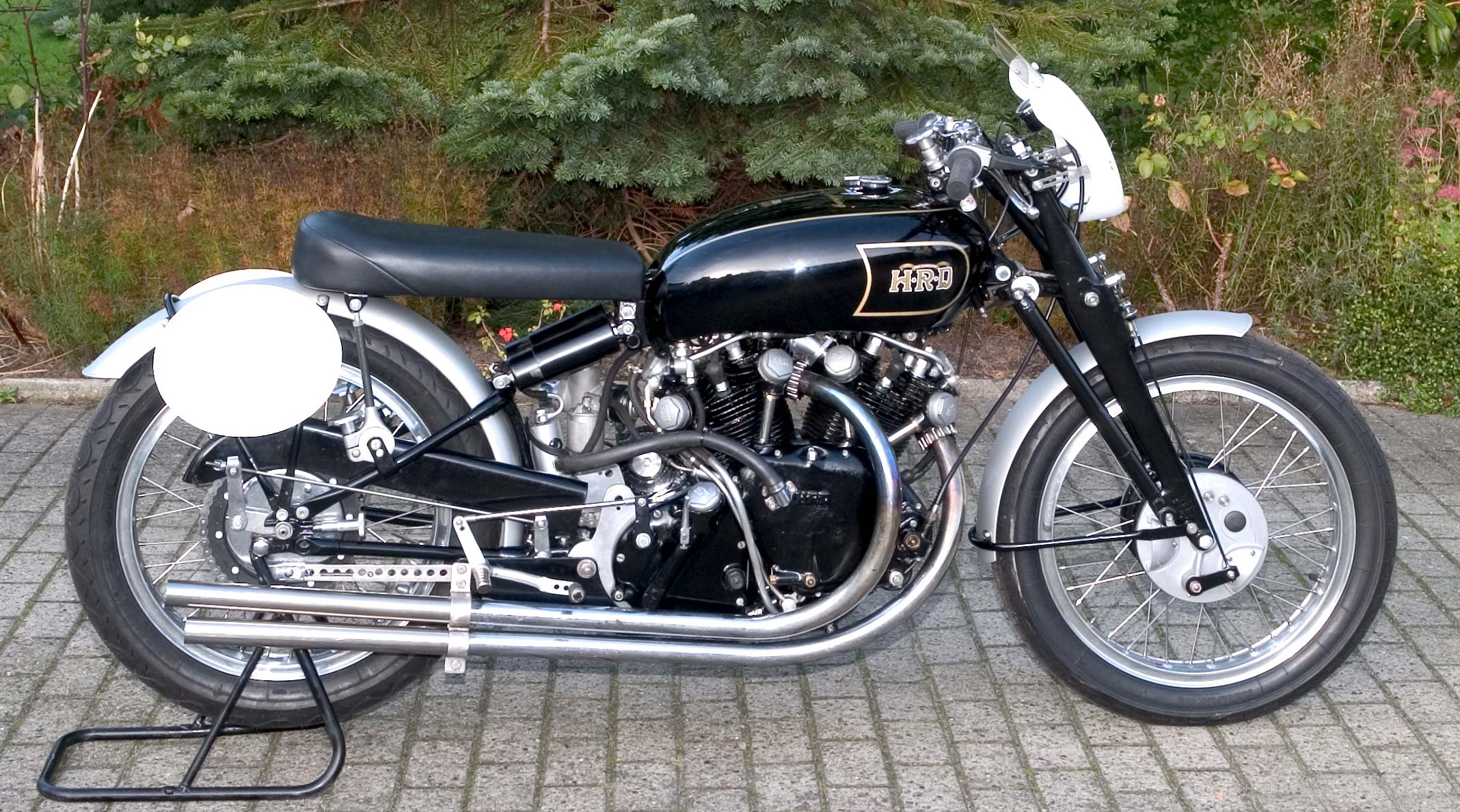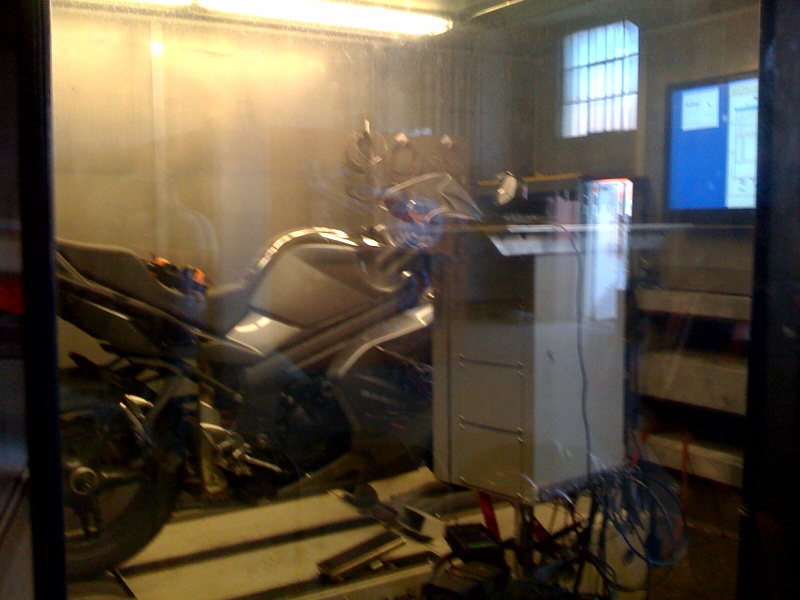|
Suzuki GSX-R600
The Suzuki GSX-R600 is a ''600 cc'' class, or supersport, sport bike in Suzuki's GSX-R series of motorcycles. History ;1992–1993 Launched with a water-cooled inline-4 engine. The first model had the same body specifications as the 1992 GSX-R750, with the smaller engine and carried over through to the 1993 model year with no changes. It was not imported to UK. ;1994–1996 Not produced. ;1997–2000 Redesigned with the introduction of Suzuki Ram Air Direct (SRAD) and carried over through to the 2000 model year. ;2001–2003 Redesigned with the introduction of fuel injection and carried over through to the 2003 model year with very few changes. ;2004–2005 Redesigned which carried over through to the 2005 model year. Total redesign of the fairings and fuel tank. Inverted forks with radial-mounted brakes. Titanium valves, 32-bit ECU were some of the changes on the engine side. ;2006–2007 Suzuki introduced an all-new GSX-R600. Underslung exhaust and slipper clutc ... [...More Info...] [...Related Items...] OR: [Wikipedia] [Google] [Baidu] |
DOHC
An overhead camshaft (OHC) engine is a piston engine where the camshaft is located in the cylinder head above the combustion chamber. This contrasts with earlier overhead valve engines (OHV), where the camshaft is located below the combustion chamber in the engine block. ''Single overhead camshaft'' (SOHC) engines have one camshaft per bank of cylinders. ''Dual overhead camshaft'' (DOHC, also known as "twin-cam".) engines have two camshafts per bank. The first production car to use a DOHC engine was built in 1910. Use of DOHC engines slowly increased from the 1940s, leading to many automobiles by the early 2000s using DOHC engines. Design In an OHC engine, the camshaft is located at the top of the engine, above the combustion chamber. This contrasts the earlier overhead valve engine (OHV) and flathead engine configurations, where the camshaft is located down in the engine block. The valves in both OHC and OHV engines are located above the combustion chamber; however an OHV ... [...More Info...] [...Related Items...] OR: [Wikipedia] [Google] [Baidu] |
Suzuki Motorcycles ...
List of Suzuki motorcycles. References {{Suzuki motorcycles * Suzuki is a Japan, Japanese multinational corporation headquartered in Minami-ku, Hamamatsu, Japan. Suzuki manufactures automobiles, motorcycles, All-terrain vehicle, all-terrain vehicles (ATVs), outboard motor, outboard marine engines, wheelchairs ... [...More Info...] [...Related Items...] OR: [Wikipedia] [Google] [Baidu] |
Spam
Spam may refer to: * Spam (food), a canned pork meat product * Spamming, unsolicited or undesired electronic messages ** Email spam, unsolicited, undesired, or illegal email messages ** Messaging spam, spam targeting users of instant messaging (IM) services, SMS or private messages within websites Art and entertainment * Spam (gaming), the repetition of an in-game action * "Spam" (Monty Python), a comedy sketch * "Spam", a song on the album ''It Means Everything'' (1997), by Save Ferris * "Spam", a song by "Weird Al" Yankovic on the album ''UHF – Original Motion Picture Soundtrack and Other Stuff'' * Spam Museum, a museum in Austin, Minnesota, US dedicated to the canned pork meat product Other uses * Smooth-particle applied mechanics, the use of smoothed-particle hydrodynamics Smoothed-particle hydrodynamics (SPH) is a computational method used for simulating the mechanics of continuum media, such as solid mechanics and fluid flows. It was developed by Gingold and ... [...More Info...] [...Related Items...] OR: [Wikipedia] [Google] [Baidu] |
External Links
An internal link is a type of hyperlink on a web page to another page or resource, such as an image or document, on the same website or domain. Hyperlinks are considered either "external" or "internal" depending on their target or destination. Generally, a link to a page outside the same domain or website is considered external, whereas one that points at another section of the same web page or to another page of the same website or domain is considered internal. These definitions become clouded, however, when the same organization operates multiple domains functioning as a single web experience, e.g. when a secure commerce website is used for purchasing things displayed on a non-secure website. In these cases, links that are "external" by the above definition can conceivably be classified as "internal" for some purposes. Ultimately, an internal link points to a web page or resource in the same root directory. Similarly, seemingly "internal" links are in fact "external" for ... [...More Info...] [...Related Items...] OR: [Wikipedia] [Google] [Baidu] |
Bondi Digital Publishing
Bondi Digital Publishing is a privately held New York City-based digital media company that specializes in publishing complete digital archives of major consumer magazines. Founded by David Anthony and Murat Aktar in 2004, Bondi Digital Publishing began by developing the technology that allowed ''The New Yorker'' to publish ''The Complete New Yorker'' in September 2005, a digital archive of its entire print archive on 8 DVD-ROMs. In 2006, ''The New Yorker'' used Bondi's technology again when they released their digital archive on a portable hard drive. In 2007, Bondi launched its publishing division when it partnered with ''Rolling Stone'' and ''Playboy'' magazines to publish both companies' entire print archives in searchable digital archives on DVD-ROM. First published in the fall of 2007, ''Rolling Stone Cover To Cover, the First 40 Years'' () and ''Playboy Cover to Cover, the 50s'' () were part of the company's ''Cover to Cover Series'' of digital archive box sets. The company ... [...More Info...] [...Related Items...] OR: [Wikipedia] [Google] [Baidu] |
Hachette Filipacchi Media U
Hachette may refer to: * Hachette (surname) * Hachette (publisher), a French publisher, the imprint of Lagardère Publishing ** Hachette Book Group, the American subsidiary ** Hachette Distribution Services, the distribution arm See also * Hachette Filipacchi Médias, a French magazine publisher, a subsidiary of Lagardère Media ** Hachette Filipacchi Media U.S., the American subsidiary * Oxford-Hachette French Dictionary: French–English English–French {{Disambiguation eo:Hachette pl:Hachette ... [...More Info...] [...Related Items...] OR: [Wikipedia] [Google] [Baidu] |
Cycle World
''Cycle World'' is a motorcycling magazine in the United States. It was founded in 1962 by Joe Parkhurst, who was inducted to the Motorcycle Hall of Fame as "the person responsible for bringing a new era of objective journalism" to the US. ''Cycle World'' was the largest motorcycling magazine in the world. The magazine is headquartered in Irvine, California. Regular contributors include Peter Egan and Nick Ienatsch. Previous or occasional contributors have included gonzo journalist and author Hunter S. Thompson, journalist and correspondent Henry N. Manney III, and professional riding coach Ken Hill. Parkhurst sold ''Cycle World'' to CBS in 1971. CBS executive Peter G. Diamandis and his associates bought CBS Magazines from CBS in 1987, forming Diamandis Communications, which was acquired by Hachette Magazines the following year, 1988. In 2011, Hachette sold the magazine to Hearst Corporation, which in turn sold ''Cycle World'' to Bonnier Corporation Bonnier LLC (formerl ... [...More Info...] [...Related Items...] OR: [Wikipedia] [Google] [Baidu] |
Motorcycle Consumer News
''Motorcycle Consumer News'' (MCN) was a monthly motorcycling magazine that reviewed motorcycles and accessories, and covered motorcycle safety, training and industry news. Unlike most publications, it was wholly subscriber-supported and did not accept advertising. History and profile Roger Hull founded the magazine in 1969, with the name ''Road Rider'', and was publisher and editor until 1982. The title was changed to ''Motorcycle Consumer News'' (''MCN'') in 1991, when it became subscriber-supported and ad-free. While not financially beholden to advertisers, ''Motorcycle Consumer News'' was dependent on motorcycle manufacturers to furnish the motorcycles tested, rather than anonymously purchasing test vehicles, as is done by '' Consumer Reports''. Contributors have included many motorcycle training and safety specialists, including Motorcycle Hall of Fame member David L. Hough, Ken Condon, Lee Parks, Walt Fulton, and Gary LaPlante. Numerous physician contributors have inclu ... [...More Info...] [...Related Items...] OR: [Wikipedia] [Google] [Baidu] |
Suspension (motorcycle)
A motorcycle's suspension serves a dual purpose: contributing to the vehicle's handling and braking, and providing safety and comfort by keeping the vehicle's passengers comfortably isolated from road noise, bumps and vibrations. The typical motorcycle has a pair of fork tubes for the front suspension, and a swingarm with one or two shock absorbers for the rear suspension. Front suspension The most common form of front suspension for a modern motorcycle is the telescopic fork. Other fork designs are girder forks, suspended on sprung parallel links (not common since the 1940s) and bottom leading link designs, not common since the 1960s. Some manufacturers (e.g. Greeves) used a version of the swinging arm for front suspension on their motocross designs. A single-sided version of the idea is also used in motor scooters such as the Vespa. The hub-center steering as developed by Ascanio Rodorigo, on a concept associated to Massimo Tamburini is a complex front swingarm alternat ... [...More Info...] [...Related Items...] OR: [Wikipedia] [Google] [Baidu] |
Telescopic Fork
A telescopic fork is a form of motorcycle front suspension whose use is so common that it is virtually universal. The telescopic fork uses fork tubes and sliders which contain the springs and dampers. The main advantages of the telescopic fork are that (i) it is simple in design and relatively cheap to manufacture and assemble; (ii) it is lighter than older designs using external components and linkage systems; and (iii) it has a clean and simple appearance that bikers find attractive. Telescopic forks sometimes have gaiters to protect the fork tubes from abrasion and corrosion. A more modern (and more expensive) version of the conventional telescopic fork is the inverted or "USD" (upside-down) fork. BMW's patented telelever front suspension appears at first glance to be conventional telescopic fork, but the fork tubes contain neither springs nor damping. Instead, a wishbone and an inboard monoshock perform suspension duties, and the forks serve to locate the front wheel an ... [...More Info...] [...Related Items...] OR: [Wikipedia] [Google] [Baidu] |
Wet Weight (motorcycle)
Motorcycle testing and measurement includes a range of more than two dozen statistics giving the specifications of the motorcycle, and the actual performance, expressed by such things as the output of the engine, and the top speed or acceleration of the motorcycle. Most parameters are uncontroversial and claims made by manufacturers are generally accepted without verification. These might include simple measurements like rake, trail, or wheelbase, or basic features, such as the type of brakes or ignition system. Other measurements are often doubted or subject to misunderstandings, and the motorcycling press serves as an independent check on sometimes unrealistic sales and marketing claims. Many of these numbers are subject to variable methods of measurements, or disagreement as to the definition of the statistic. The parameters most often in contention for motorcycles are the weight, the engine output (power and torque), and the overall performance, especially acceleration, top ... [...More Info...] [...Related Items...] OR: [Wikipedia] [Google] [Baidu] |




